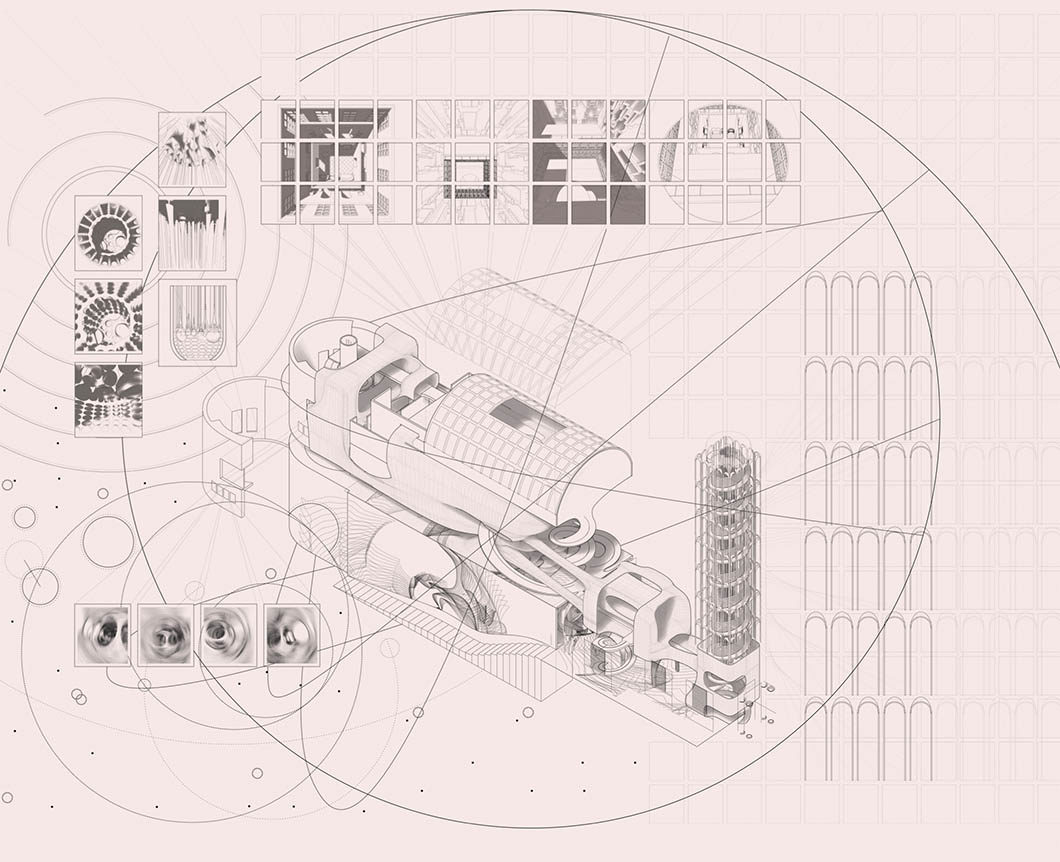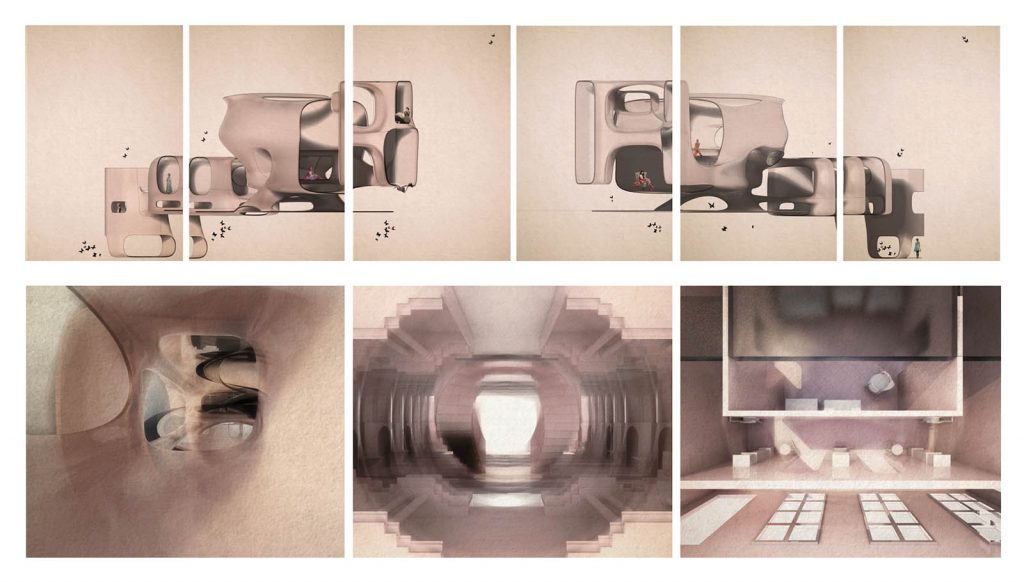Feral Frames

Zahra Safaverdi (MArch II, ’17) — Recipient of James Templeton Kelley Prize
Throughout recent history, architecture’s response to the faculty of imagination (which here is considered the mechanism that receives data, schematizes it, and makes an image out of it) has been through two different modes: the mode of object-making and the mode of world-making. These two modes belonged to two different spheres completely separate from one another. In either case, the distinction between the product of imagination, the physical manifestation of the image, and that which belongs to reality—the normality of the quotidian life—is clear. This clarity, this separation, this profound emphasis on keeping the realm of the real discernible from the realm of the imaginary is the product of modernity. Looking back at historical references beginning with the cave paintings in Lascaux to the Gothic era, the Renaissance, and ending in the late-Baroque, one can see that this boundary has been rather subtle and there was not a rigid distinction, or a necessity for one, between the two.
By relying on the historical evidence of late-Baroque framing, the possibility of a third mode would emerge: objects that could act as an occupy-able world with spatial qualities and orientational attributions. This is the moment when the boundary between the imaginary and the real is blurred and the physical, rigid threshold is broken. This alternative domain would, then, not only become a quasi-physical manifestation of imagination but a way in which these two realms could be welded to each other with a less pronounced seam. Frames, with their latent ability to exist in two paradoxical modes of existence simultaneously (that of separation and that of connection), have the capacity to expand and become a place of in-betweenness and a state of limbo.
